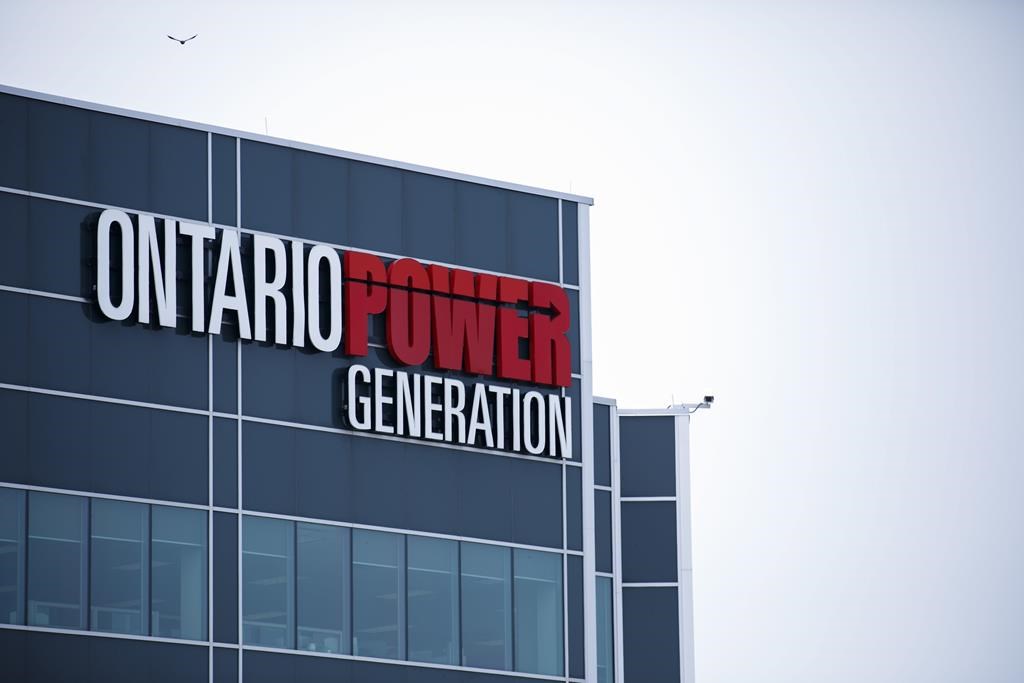Edmonton’s Capital Power Corp. and Ontario Power Generation are joining together to assess the feasibility of developing small modular nuclear reactors to help power Alberta’s electricity grid.

At an announcement Monday in Edmonton, the two companies said small modular reactors, or SMRs, will be critical in the years to come if Canada and Alberta are to meet growing demand for clean electricity.
They said the feasibility assessment will take two years to complete and will include exploring ownership and operating structures for a potential fleet of grid-scale SMRs in Alberta.
“Creating a carbon-neutral energy system that prioritizes reliability and affordability while accommodating growing demand is one of the most unprecedented transitions of our time,” said Capital Power CEO Avik Dey at Monday’s announcement.
“Nuclear energy is, and must be, a critical part of the clean energy transition, and part of our power generation fleet here in Alberta if we are to become carbon-neutral.”

Small modular reactors are a type of nuclear technology that is far smaller, cheaper and faster to build than a traditional nuclear reactor. They are fully scalable — usually in the range of 10 to a few hundred megawatts — and can be built to suit a wide variety of applications.
SMRs remain largely untested on a commercial scale, but proponents believe their time has arrived. Ontario Power Generation is already building North America’s first fleet of SMRs at the Darlington nuclear site in Ontario, with the first of these four units is expected to be complete by 2028 and online by the end of 2029.
Last year, the federal government through the Canada Infrastructure Bank committed almost $1 billion to the Darlington project.
While the company has not yet publicly released an estimated capital cost for its Darlington SMRs, Ontario Power Generation CEO Ken Hartwick said small-scale nuclear is far more affordable than a conventional nuclear plant and represents a realistic opportunity to help decarbonize Canada’s electricity grid.
“I’m very convinced this is comparable (in cost) with wind, solar, batteries or any combination of those,” Hartwick said Monday.
“With Ontario and Alberta leading on this, along with other provinces that are looking . . . I really do think we can make a difference.”
In Canada, four provinces — New Brunswick, Ontario, Saskatchewan and Alberta — have agreed to collaborate on the advancement of SMRs as a clean energy option, and Canadian researchers are working on new materials and designs that could make SMRs practical in a large range of new uses.
SMRs have even been touted as a potential solution for Alberta’s oilsands, one that could replace the vast volumes of fossil fuels burned in the oilsands production process.
Monday’s announcement about SMRs came after a weekend of bitterly cold temperatures strained the capacity of Alberta’s electrical system. The province’s grid operator appealed to consumers to preserve power in order to prevent rotating blackouts.
Alberta’s Utilities Minister Nathan Neudorf said the situation was a reminder of how important it will be to ensure the province’s electricity grid has the right mix going forward.

Alberta, which has very little hydroelectric generating capacity but a rapidly expanding wind and solar power footprint, still depends heavily on fossil fuels in the form of natural gas for electricity generation.
SMRs are appealing, Neudorf said, because they provide the type of consistent base-load power that will be needed to backstop more intermittent clean power sources such as solar and wind in the future.
“SMRs will soon play a role in growing our economy and reducing our emissions,” Neudorf said.
“I think it makes it makes great sense for Alberta to be looking at this, especially given their investment in renewables,” said Jacquie Hoornweg, a clean energy expert with the Canadian Global Affairs Institute.
“Having a small modular reactor in the system means that you can get the most out of your renewables when you’re operating, but you have that base-load or load-following capability that is also low-carbon.”
The challenges facing the deployment of SMRs in Canada include regulatory hurdles, as well as whether commercial-scale projects can be completed on budget. Recently, an Oregon-based company called NuScale cancelled a proposed SMR project south of the border, citing concerns around escalating costs.
But Hoornweg said the real appeal of the technology is the way it can be scaled up or down as needed.
“There are a lot of places in Alberta for sure that may not be able to benefit from a traditional-scale reactor, but there are many regional centres as well as many off-grid or very specific-purpose uses where a small modular reactor could make a lot of sense,” she said.
“The potential here is huge, in terms of being an enabler of decarbonization in Alberta.”

Comments